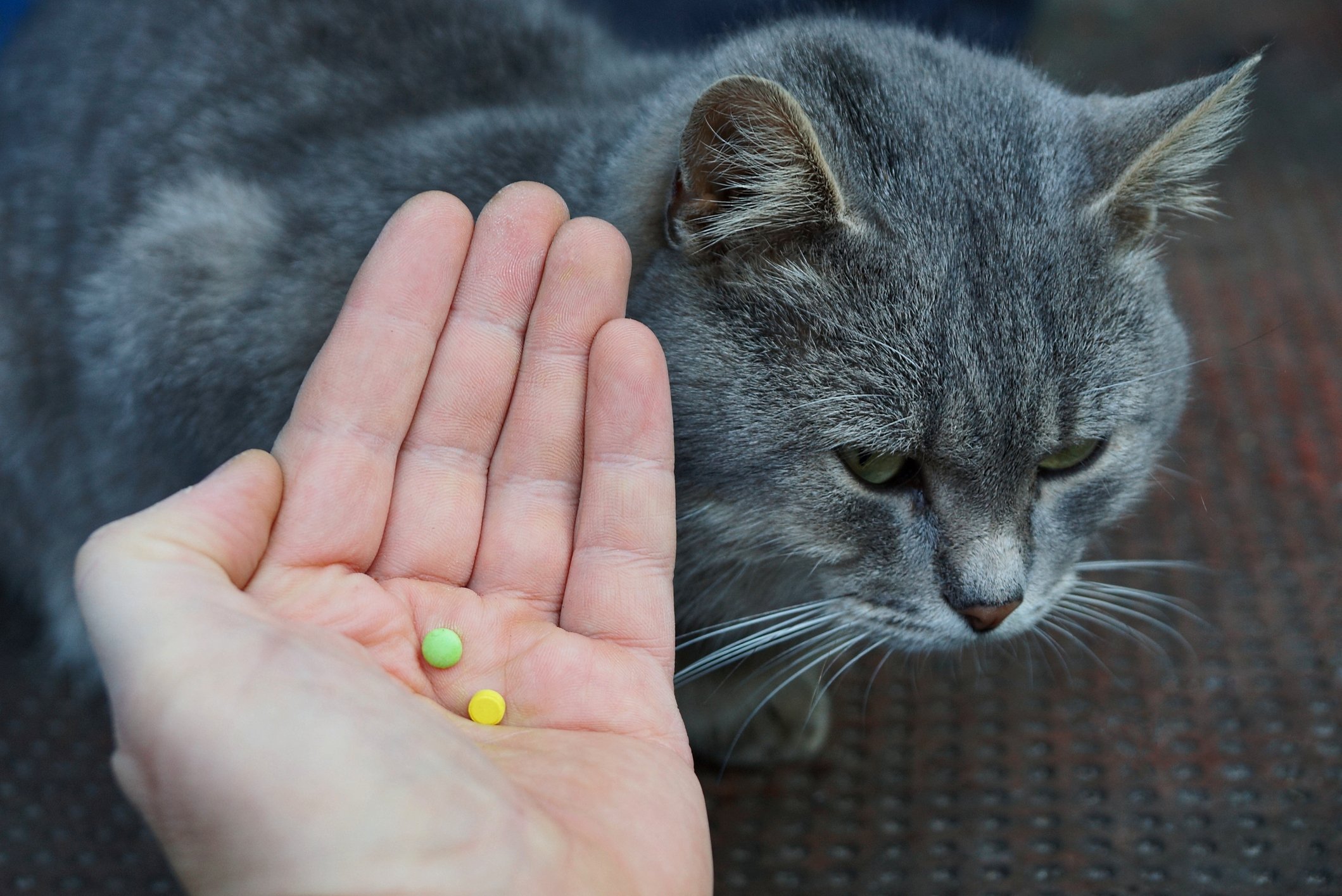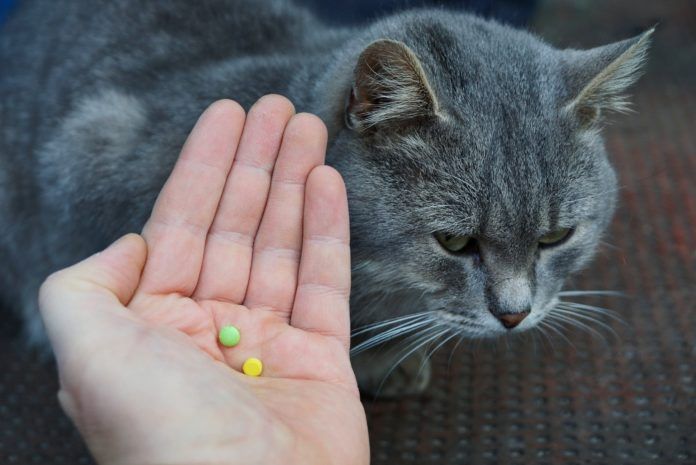Getty Images

We all know that many cats are finicky, but a distinction must be made between choosy cats as opposed to cats that are losing or have entirely lost their appetite. Poor or decreasing appetite is one of the most frequent motivations for a cat owner to seek veterinary advice.
The medical term for a lack of appetite is anorexia, and we usually qualify it further as being ‘partial anorexia’ (still eating, but much less) versus ‘complete anorexia’ (not eating anything at all). True anorexia must be distinguished from pseudo-anorexia, in which the appetite is normal, but there is a decreased intake of food due to secondary factors, such as a painful tooth, fractured jaw, tongue injury or impaired sense of smell due to an upper respiratory infection.
Anorexia is a very common manifestation of disease. Cats that are eating ravenously present less of a diagnostic dilemma, as there is a shorter list of illnesses that result in increased appetite (diabetes, hyperthyroidism, pancreatic insufficiency and a few others). On the other hand, the list of illnesses that result in decreased appetite is enormous, presenting a far greater diagnostic challenge (as a result, addressing the specific illnesses that could lead to anorexia is beyond the scope of this article).
Instead, we’ll focus on the harm that can result from anorexia, how to know when inadequate food intake reaches a point where it might impinge on the patient’s health and what remedies are available through your veterinarian.
Prolonged poor nutrition
As carnivores, cats have a higher protein and amino acid requirement than most other animals. When cats become anorexic, they rapidly become protein-malnourished. Failure to provide adequate nutrition may ultimately be more detrimental than the primary disease that is causing the anorexia. When cats have been anorexic for longer than three to five days, bodily fats are broken down into triglyerides, which the body intends to use for energy.
Sometimes these good intentions go awry, and cats may abnormally accumulate triglycerides within their liver cells. This excessive accumulation of fat in the liver is called hepatic lipidosis, and it is a serious liver disorder.
The ultimate goal of the veterinarian is to diagnose and treat the cat’s underlying condition. However, symptomatic treatment of anorexia during the diagnostic phase is equally important if a satisfactory outcome is to be achieved.
Role of appetite stimulants
It is always preferable to induce voluntary eating rather than to force cats to eat against their will. The use of appetite stimulants can play a valuable role in this regard. It is very important for veterinarians and owners to acknowledge that appetite stimulation should not be used as a substitute for obtaining an accurate diagnosis and then treating the underlying condition. Nor should appetite stimulants be used in very ill patients, as they are often ineffective. The most common scenarios for considering appetite stimulants are:
- Short-term treatment while trying to make a diagnosis;
- Persistent, moderate anorexia where no cause can be discovered;
- Persistent, moderate anorexia where a cause is found, but treatment doesn’t fully restore the cat’s appetite;
- When behavioral issues or environmental factors are involved, and manipulating the diet has been unsuccessful;
- When an aversion to food is preventing the cat from eating despite the underlying cause having been treated and resolved;
- To support nutrition in cats who are chronically ill (for example, those with chronic kidney disease or cancer) and are being given palliative treatment.
Drugs to enhance appetite
A variety of drugs have been used in cats in an attempt to get them to eat. For years, our best option was the drug cyproheptadine. However, successful use of the drug mirtazapine was first reported in 2006, and subsequent studies report a significant increase in food consumed after mirtazapine was given to healthy cats. As a result, mirtazapine has now replaced cyproheptadine as the most popular drug option for many veterinarians.
Pharmacologically, mirtazapine is classified as a serotonin receptor antagonist. Dosing schedules vary among veterinarians. Some administer a small amount every 24 hours. Cats with kidney disease have reduced ability to metabolize the drug, so the drug should be given every 48 hours to these animals. Some veterinarians have demonstrated success with dosing every third day. Adverse effects are uncommon, but they may include muscle twitching, hyperactivity, increased vocalization and acting “jittery” in general. These side effects are less likely at lower doses.
The previously-popular cyproheptadine is an antihistamine that antagonizes serotonin directly. It may take a few days to reach effective blood levels, and it needs to be administered more frequently (every eight hours) as compared to mirtazapine. The drug is metabolized by the liver and kidneys, so cats with liver disease or kidney disease need to have their dosage adjusted downward.
Other drugs to help stimulate a cat’s appetite include anabolic steroids, such as nandrolone decanoate and stanozolol. Unfortunately, adverse effects are common, and can be quite serious. For this reason, they are no longer recommended for appetite stimulation.
The benzodiazepines are a class of drug that stimulates appetite in cats, with diazepam (Valium) being the best known in this group. It works dramatically when given intravenously, but less consistently when given orally. The effects are short-lived, however, and the amount of food eaten usually falls short of the cat’s nutritional requirements. Side effects include sedation and uncoordinated gait. Multiple reports of a serious, often fatal adverse reaction resulting in severe liver damage have made the use of the benzodiazepines controversial, especially since better alternatives now exist.
The glucocorticoids are a class of drugs commonly prescribed for numerous disorders. Increased appetite is a well-documented side effect, although dogs experience more hunger from these drugs than cats. The appetite-stimulating effect tends to last only a few weeks, and there are many potential side effects (diabetes, congestive heart failure, immunosuppression), making these drugs a poor choice for long-term use as appetite stimulants.
In my feline practice, we often diagnose cats with inflammatory bowel disease (IBD). Poor appetite is a common clinical sign of IBD. Prednisolone, a glucocorticoid, is the drug of choice for treatment. When initially administered at relatively high doses for IBD, the increase in appetite is likely due to the appetite stimulating effect of the drug. As the dosage is gradually tapered to every other day therapy, the continued good appetite is likely due to resolution of the IBD.
Megestrol acetate is a synthetic progestin hormone. Occasionally, it will stimulate a cat’s appetite, but risk of serious side effects precludes its use for this purpose.
Diagnosis is key
Most cats presenting with anorexia have an underlying systemic disease. Pharmacological enhancement of appetite should never take the place of a thorough diagnostic work-up to determine the cause of the anorexia. Appetite stimulants, if used properly, may help revive a cat’s waning appetite. However, if the cat doesn’t respond to appetite stimulants, assisted feeding using a feeding tube, or even intravenous feeding, may be warranted. — Arnold Plotnick, DVM, DACVIM




